How to Pack for a Cruise with Kids: The Ultimate Guide
Cruising with kids can be a fantastic family adventure filled with fun, relaxation, and quality time. However, the key to ensuring a smooth and enjoyable experience lies in your preparation—specifically, how you pack. On a cruise, you’ll face challenges like limited cabin space, a wide range of onboard activities, and varying weather conditions. This comprehensive guide will ensure you’re well-prepared, packing efficiently while keeping your kids happy and comfortable throughout your journey.
Traveling on a cruise with kids can be a magical experience, but it also comes with its challenges—most notably, packing. Unlike traditional travel, a cruise requires meticulous organization since cabin space is often limited, and your ability to shop for forgotten items is restricted once you’re onboard. Forgetting an essential item, such as diapers or sunscreen, can add unnecessary stress to your vacation.
Additionally, a cruise vacation involves diverse activities, from lounging by the pool to participating in formal dinners, shore excursions, and themed events. This variety requires a versatile wardrobe and specialized gear. Weather fluctuations, depending on your destination, add another layer of complexity. Whether you’re cruising through the warm Caribbean or exploring Alaska’s icy waters, you must prepare ahead of time.
This guide is your one-stop solution to packing for a family cruise. Covering everything from essential documents to entertainment options, we’ll ensure your packing checklist is complete. With the right strategies and thoughtful planning, you’ll transform the packing process from a daunting task into an efficient, stress-free part of your vacation preparation.
1. Understanding the Basics of Packing for a Cruise with Kids
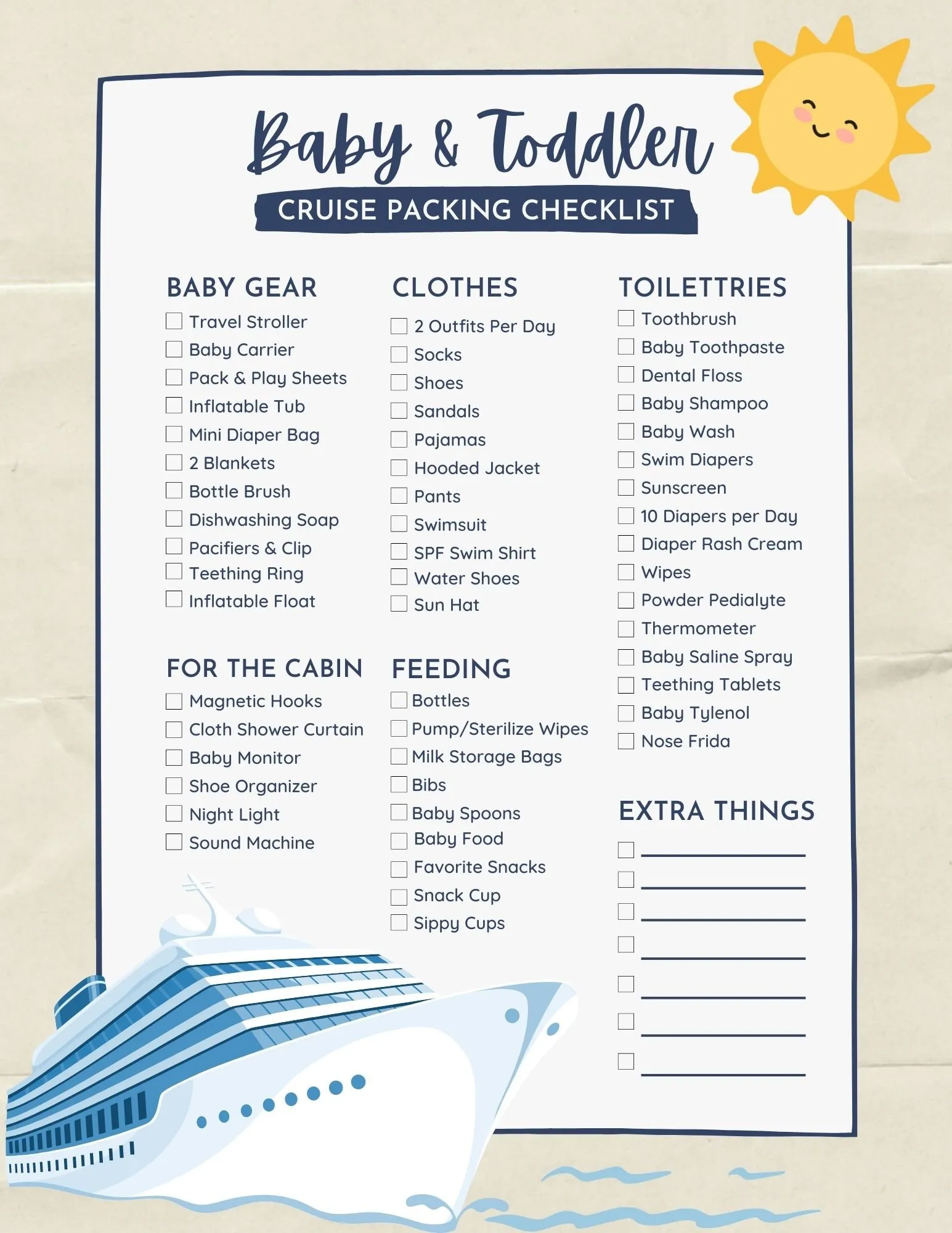
1.1 Why Packing for a Cruise is Different
Packing for a cruise differs significantly from other vacations for several reasons, with the compact nature of cruise ship cabins being one of the most notable differences. Most cruise cabins are designed for functionality over luxury, meaning space is at a premium. Overpacking can quickly turn your cabin into a cluttered mess, making it harder to unwind and enjoy your trip.
Moreover, once you’re on the ship, your shopping options are limited. While cruise ships often have onboard shops, they typically stock only basic toiletries or souvenirs, and the prices can be steep. Forgetting vital items like medications, baby formula, or sunscreen can disrupt your plans and create unnecessary stress.
Cruise vacations also encompass a wider variety of activities compared to other trips. You’ll need swimwear for poolside fun, formalwear for elegant dinners, casual outfits for exploring the ship, and gear for shore excursions. Families cruising with kids must also pack age-appropriate entertainment and snacks to keep the little ones happy throughout the day.
1.2 Key Considerations
Packing for a cruise with kids requires tailoring your approach based on age and destination. Babies and toddlers have unique needs—diapers, formula, baby wipes, and portable cribs are non-negotiables. Children and pre-teens, on the other hand, may need items such as snacks, tablets preloaded with games, or books to keep them occupied.
Destination-specific packing is also essential. Warm-weather cruises, like those to the Caribbean, require summer essentials such as swimsuits, reef-safe sunscreen, and breathable clothing. In contrast, cold-weather cruises, such as Alaskan expeditions, demand insulated jackets, waterproof gloves, and thermal layers. By planning ahead for both the climate and the types of activities you’ll encounter, you can ensure everyone in the family is comfortable and ready for adventure.
2. Essential Documents and Travel Items
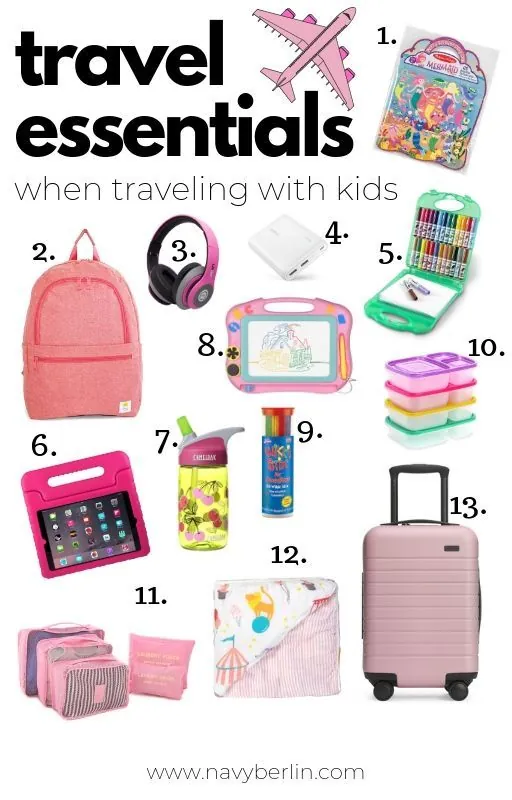
2.1 Must-Have Documents
Before boarding your cruise, ensure you have all necessary documents to avoid last-minute stress or delays. Every traveler will need a valid passport, particularly for international itineraries, and some destinations may also require visas. For families traveling with young children, it’s essential to carry vaccination records, especially in light of current health protocols on cruise ships.
Additionally, keep your cruise tickets, emergency contact information, and travel insurance details readily accessible. Travel insurance is especially important for cruises as it often covers cancellations, medical emergencies, and missed ports of call. Store documents in a waterproof, organized folder or pouch to prevent damage and allow for easy access when checking in at the port.
2.2 Carry-On Essentials
Packing a well-thought-out carry-on bag can make embarkation day much smoother. Unlike traditional hotels, your luggage might not arrive at your cabin until later in the afternoon, so having critical items on hand is vital. For families with young children, carry items like diapers, snacks, and medications. For older kids, include small entertainment options such as coloring books or tablets with preloaded movies.
A change of clothes for each child is another essential carry-on item, especially in case of spills or delays. This will ensure that everyone is comfortable and ready to start exploring the ship as soon as you board.
3. Clothing Essentials for Kids on a Cruise
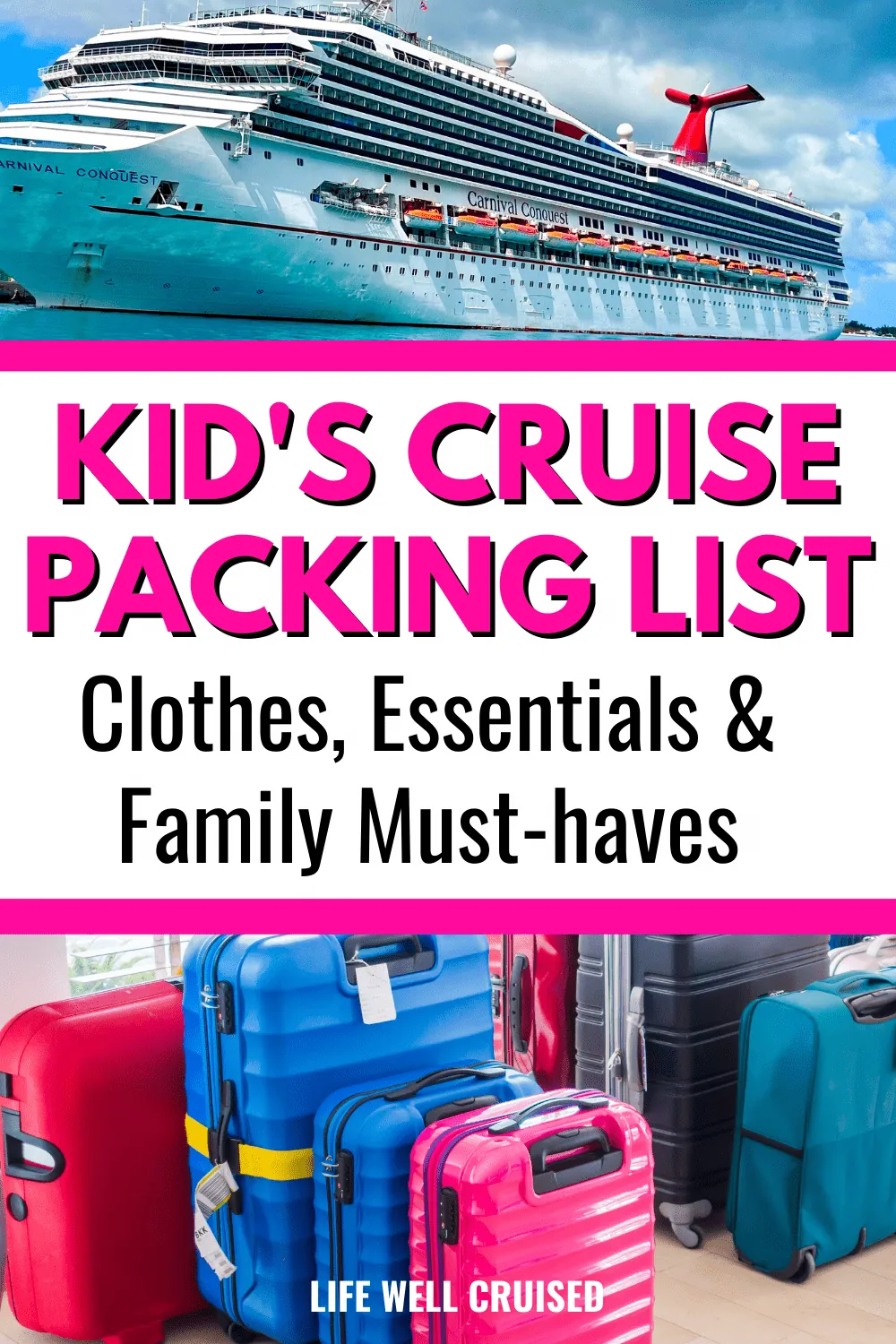
Packing clothing for kids on a cruise requires careful planning to strike the right balance between practicality and variety. Each outfit should align with the types of activities planned while also accounting for quick changes and weather variations. Here’s how to approach clothing essentials:
3.1 Everyday Wear
Daytime onboard activities and casual dining require comfortable, casual outfits. Plan for at least 7–10 casual outfits per child, depending on the length of the cruise. Opt for lightweight and easily washable clothes such as T-shirts, shorts, and leggings, which work well for both playing and lounging. Accessories like hats and sunglasses are necessary for warm-weather destinations.
3.2 Swimwear
Swimming is often one of the top highlights for kids on a cruise. Each child should have 2–3 swimsuits, so you always have a dry one on hand. Rash guards or swim shirts are highly recommended, especially for younger kids, as they provide extra sun protection. For toddlers, pack swim diapers, as most cruise ships require them for children who aren’t fully potty-trained.
3.3 Formal Night Outfits
Most cruises have at least one formal dining night, and participating is part of the fun. For formal evenings, pack special occasion outfits such as dresses, suits, or collared shirts and dressy shoes. While casual options may be permitted, dressing up often adds to the overall excitement, especially for kids.
3.4 Weather-Specific Gear
Your cruise destination determines which weather-specific items should be on your packing list:
- Warm-Weather Cruises: Bring lightweight clothing such as cotton dresses, tank tops, and sandals for tropical climates. Pack sun hats, reef-safe sunscreen, and a reusable water bottle to keep kids hydrated.
- Cold-Weather Cruises: Prepare for chilly conditions by packing thermal layers, waterproof jackets, gloves, and knit hats. Comfortable, waterproof boots are a must for exploring icy or snowy destinations.
By planning and categorizing clothing ahead of time, you’ll ensure that your kids are dressed appropriately for every activity, from poolside lounging to elegant dinners.
4. Must-Have Accessories and Gear
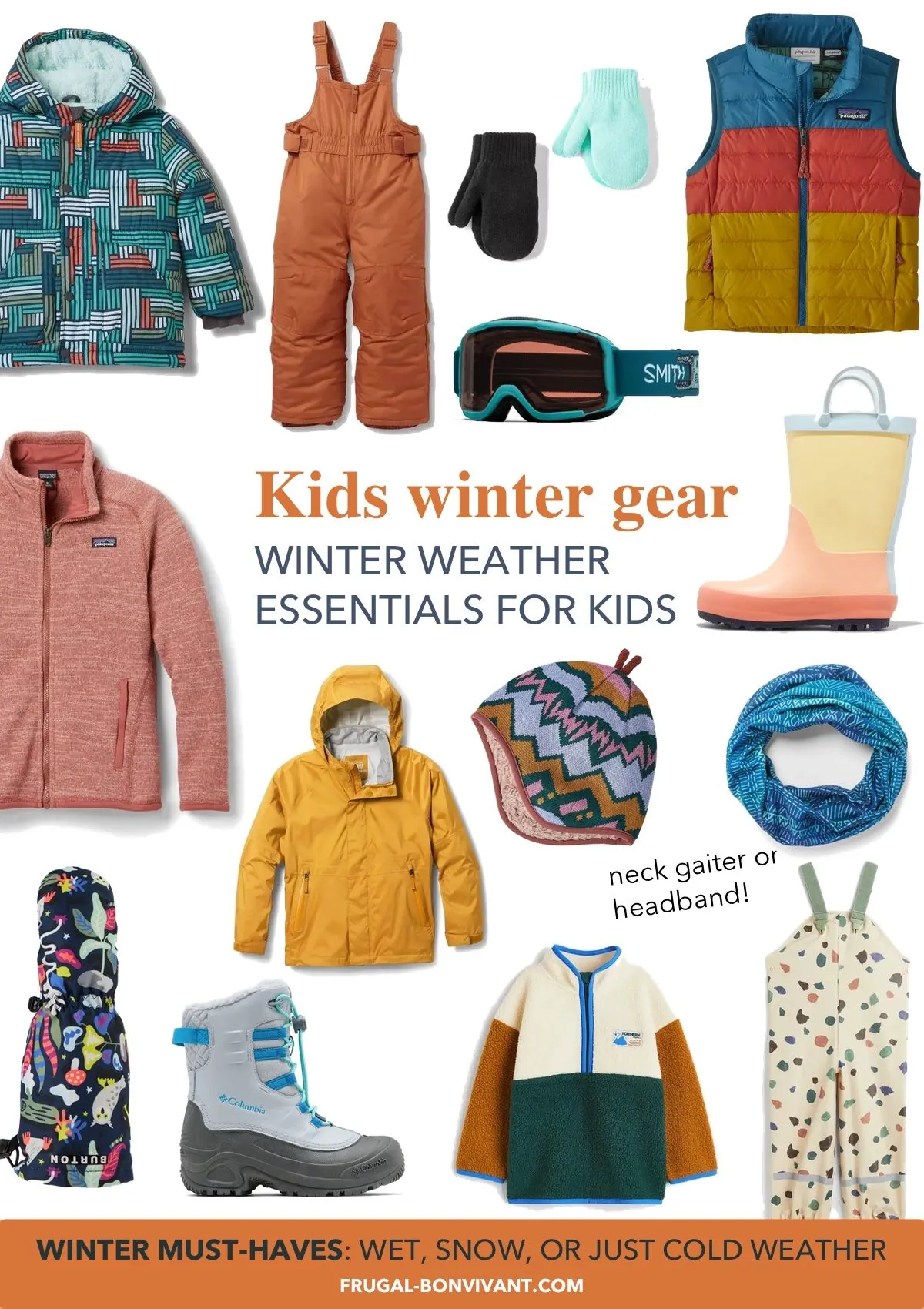
Packing the right accessories and gear can make a significant difference in your family cruise experience. These items can offer both convenience and comfort for you and your kids.
4.1 Strollers and Baby Carriers
For parents with younger children, a compact stroller or baby carrier is essential. Umbrella strollers are a favorite among cruisers because they are lightweight, easy to fold, and ideal for navigating narrow cruise ship hallways. These also work well for port excursions, where cobblestone streets or uneven terrain may make traditional strollers challenging to maneuver.
Baby carriers are another excellent option, especially for parents with infants. They allow hands-free movement, whether you’re boarding the ship or heading out for a walking tour onshore.
4.2 Sleeping Essentials
Adjusting to unfamiliar sleeping arrangements can be tough for kids, especially younger ones. Pack comfort items such as favorite blankets or stuffed animals to create a sense of familiarity. For toddlers, consider a travel cot or an inflatable toddler bed to ensure a good night’s sleep. Noise machines or white noise apps can help block out unfamiliar cruise ship sounds.
4.3 Beach Day Necessities
If your cruise includes beach stops, be prepared with the right gear. Pack sand toys, water shoes, and a mesh bag to carry everything without bringing back half the beach in your luggage. Reef-safe sunscreen is also a must to protect both your kids and the environment. Having a lightweight, quick-drying beach towel for each child can come in handy.
5. Toiletries and Health Items
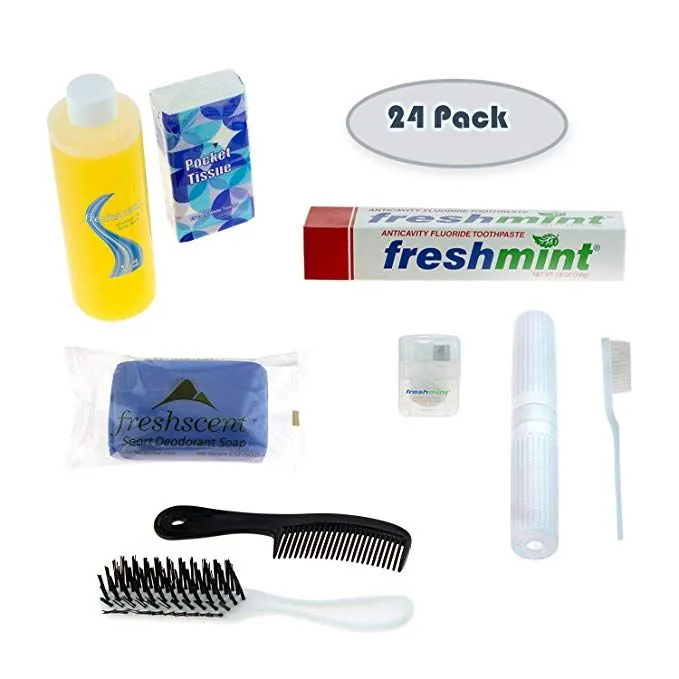
Packing toiletries and health essentials is critical when cruising with kids, as onboard shops may lack the specific products you need. Thoughtfully planning for these items ensures you’re prepared for any situation, from minor scrapes to unexpected illnesses.
5.1 Kid-Friendly Toiletries
Children require their own set of toiletries tailored to their age and needs. For younger kids, pack gentle baby shampoo, body wash, and lotion, particularly if they have sensitive skin. Don’t forget essentials like toothbrushes and child-friendly toothpaste. If you’re traveling with a baby or toddler, include items such as diaper rash cream, baby wipes, and plenty of swim diapers for pool or beach days.
Older kids may prefer their own toiletries, so consider travel-sized options of their favorite brands. Pack extras of items like hair ties, brushes, and detangling spray if needed.
5.2 First-Aid Kit
A well-stocked first-aid kit is a lifesaver on a cruise. Include basics like band-aids, antiseptic wipes, and pain relievers suitable for kids. Pack motion sickness remedies, such as sea bands or age-appropriate medications, in case your child experiences nausea. Fever reducers like acetaminophen or ibuprofen, along with a thermometer, can help you address any unexpected illnesses.
Additionally, include sunscreen (reef-safe for tropical destinations) and aloe vera gel for soothing sunburns. Antihistamines, such as Benadryl, can be helpful for allergies or insect bites during shore excursions. Being proactive about health supplies will save you from needing to source these items at potentially exorbitant prices onboard.
6. Entertainment Options for Kids

Keeping kids entertained on a cruise is vital to ensuring a smooth and enjoyable trip. A combination of offline activities and digital devices will keep boredom at bay, both onboard and during shore excursions.
6.1 Onboard Activities
Tablets preloaded with age-appropriate games, movies, or educational apps can be a go-to source of entertainment during downtime. Invest in kid-safe headphones to avoid disturbing other passengers. For little ones, small toys like magnetic figures, fidget spinners, or puzzles are excellent options for cabin playtime. These toys are compact, mess-free, and easy to pack.
Older kids might enjoy a travel journal or sketchbook to document their cruise adventures. Look for cruise lines that offer children’s programs or onboard kids’ clubs, which often include supervised activities, crafts, and games to keep young travelers engaged.
6.2 Shore Excursion Entertainment
Downtime during shore excursions—such as long waits or car rides—calls for lightweight and portable distractions. Bring along books, travel-friendly games like Uno, or compact building sets like LEGO kits. If visiting a beach, classic activities like sandcastle building with toys can keep kids entertained for hours.
A simple scavenger hunt tailored to your destination can make excursions more interactive and exciting for children. This fosters curiosity and keeps them engaged while exploring a new environment.
7. Organizational Tips for Packing
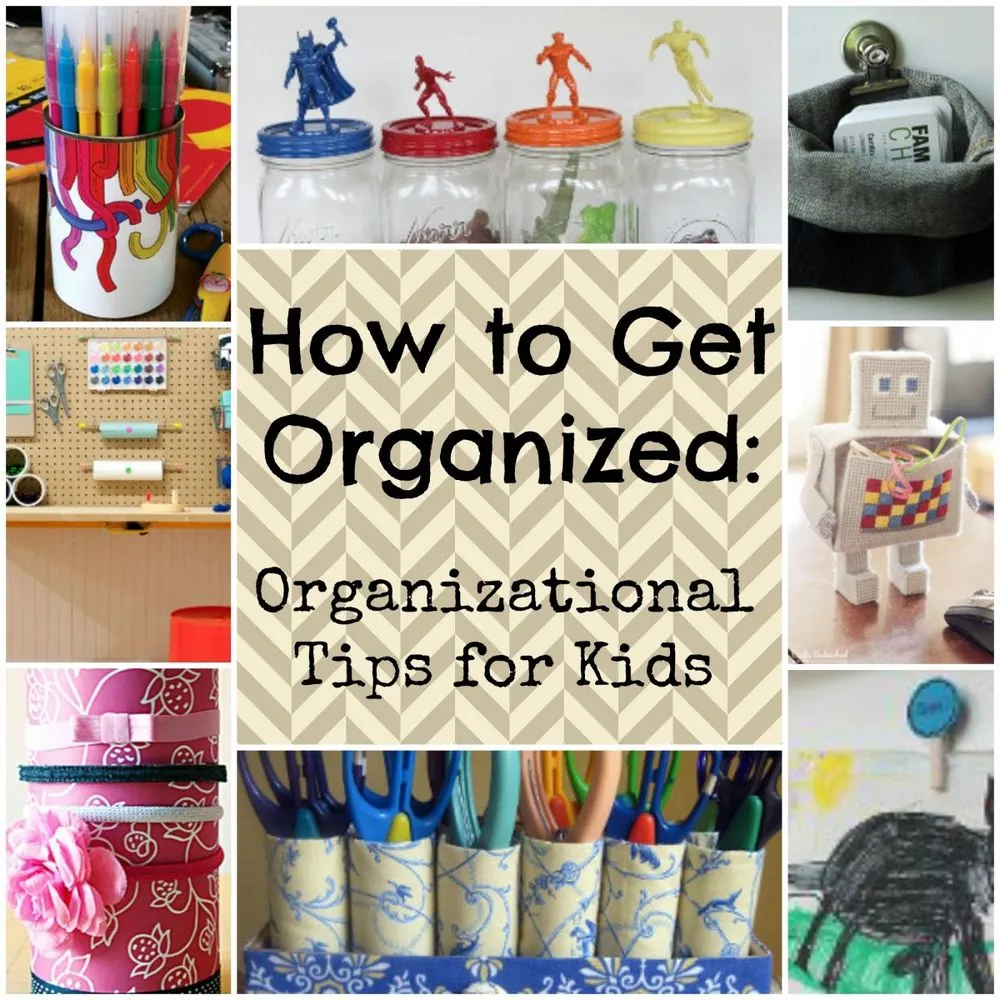
Packing for kids often means managing a large volume of small items, but organizational tools and strategies can make the process far more efficient.
7.1 Using Packing Cubes
Packing cubes are invaluable for family travel. Use color-coded cubes for each child, allowing you to quickly locate their belongings without rummaging through multiple suitcases. Compression cubes are especially helpful for saving space, making it easier to fit bulky items like sweaters or jackets.
Consider dedicating separate cubes for specific categories, such as swimwear, casual outfits, or formal attire. This system not only keeps everything organized but also simplifies unpacking once you’re onboard.
7.2 Smart Storage Solutions
Cruise cabins often have limited storage, so maximizing available space is crucial. Magnetic hooks, which adhere to the metal walls of cruise cabins, are fantastic for hanging jackets, hats, or small bags. Over-the-door organizers are another versatile tool, perfect for holding toiletries, accessories, or even shoes.
Utilize your luggage as additional storage by tucking it under the bed once unpacked. Collapsible bins or laundry hampers can also help keep dirty clothes separate from clean ones.
8. Destination-Specific Packing Tips
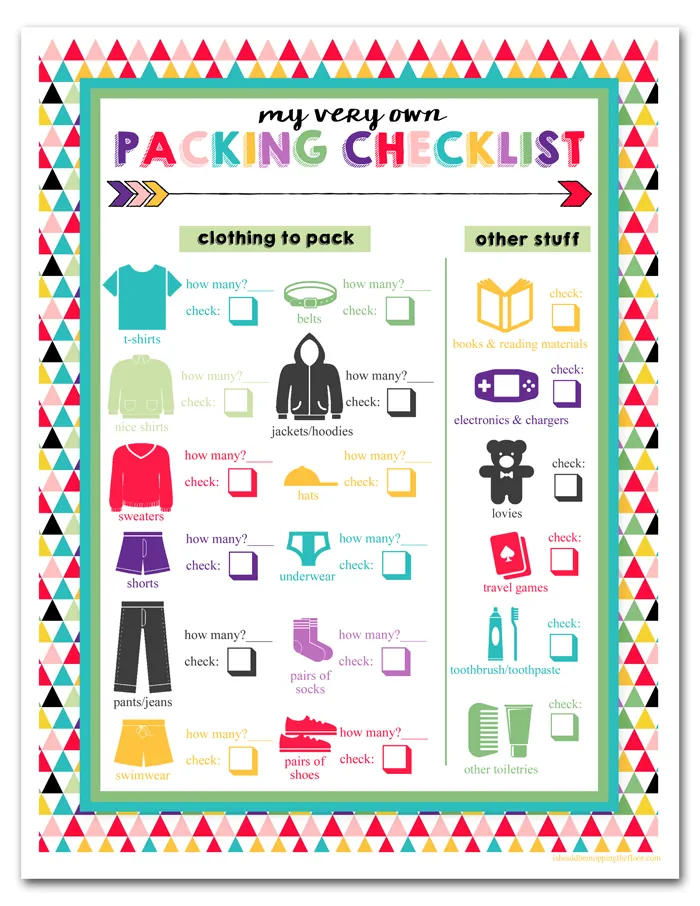
Different cruise destinations demand tailored packing to ensure comfort and convenience for your family. Here’s how to prepare for warm-weather cruises versus cold-weather adventures.
8.1 Warm Weather Cruises
Cruises to tropical destinations, like the Caribbean or the Bahamas, call for lightweight, sun-protective clothing. Pack breathable fabrics such as cotton or linen to combat humidity. Essential items include:
- Swimsuits and rash guards (2–3 per child).
- Sun hats, sunglasses, and reef-safe sunscreen to protect against harmful UV rays.
- Sandals or water shoes for beach days and pool use.
- A reusable water bottle for each family member to stay hydrated.
- A portable, battery-operated fan may also come in handy for hot excursions.
8.2 Cold Weather Cruises
If you’re venturing to chillier regions like Alaska or Norway, layering will be your best friend. Essential items for cold-weather cruises include:
- Thermal base layers to retain body heat.
- Waterproof jackets with hoods to shield against rain or snow.
- Gloves, scarves, and knit hats for added warmth.
- Waterproof boots suitable for snowy or icy terrain.
- Hand warmers for extra comfort during outdoor excursions.
By tailoring your packing to the climate and activities of your destination, you’ll ensure your kids are comfortable and ready to fully enjoy the experience.
9. Common Mistakes to Avoid When Packing with Kids
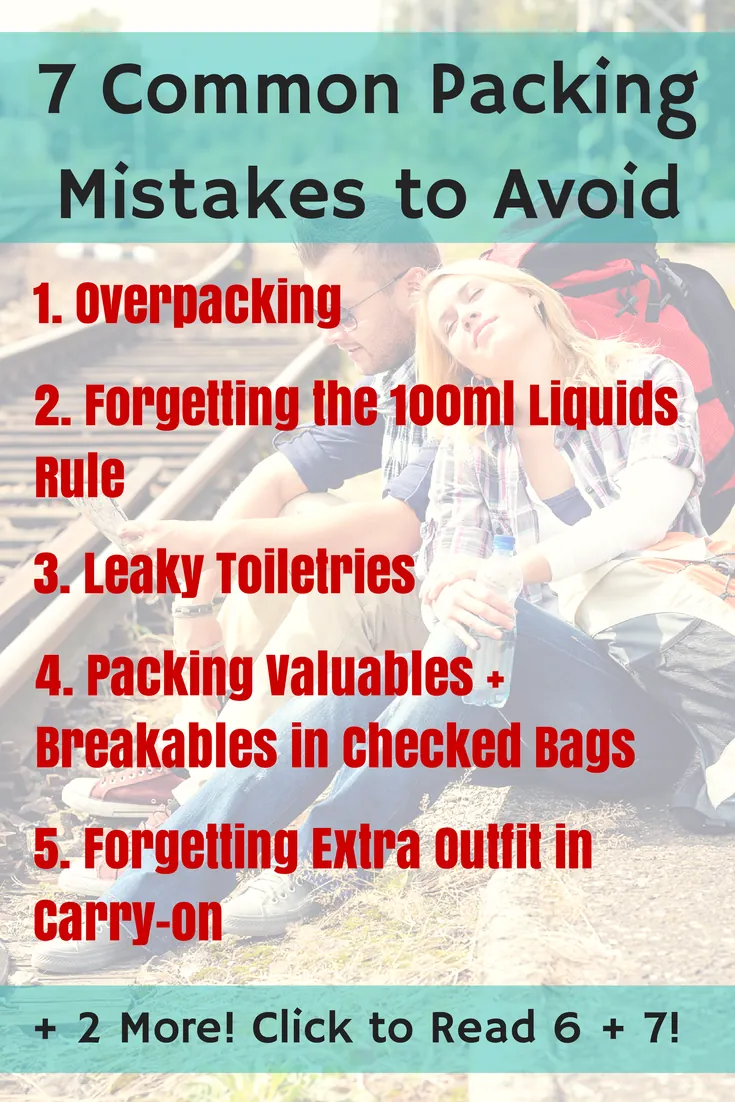
Packing for a cruise with kids can feel overwhelming, and it’s easy to make mistakes. Avoid these common pitfalls to ensure a stress-free experience:
- Overpacking Bulky Items: Bringing large strollers or unnecessary gear can clutter small cabins. Opt for compact solutions, such as umbrella strollers or travel-sized items.
- Forgetting Medications or Specific Snacks: While most ships have basic medical supplies, they may not stock child-specific medications or your kids’ favorite snacks. Bring these from home to avoid complications.
- Ignoring Cruise Line Policies: Items like surge-protected power strips, irons, and drones are often prohibited onboard. Review your cruise line’s list of restricted items before packing.
By planning thoughtfully and avoiding these mistakes, you’ll steer clear of unnecessary stress during your vacation.
FAQs: Packing for a Cruise with Kids
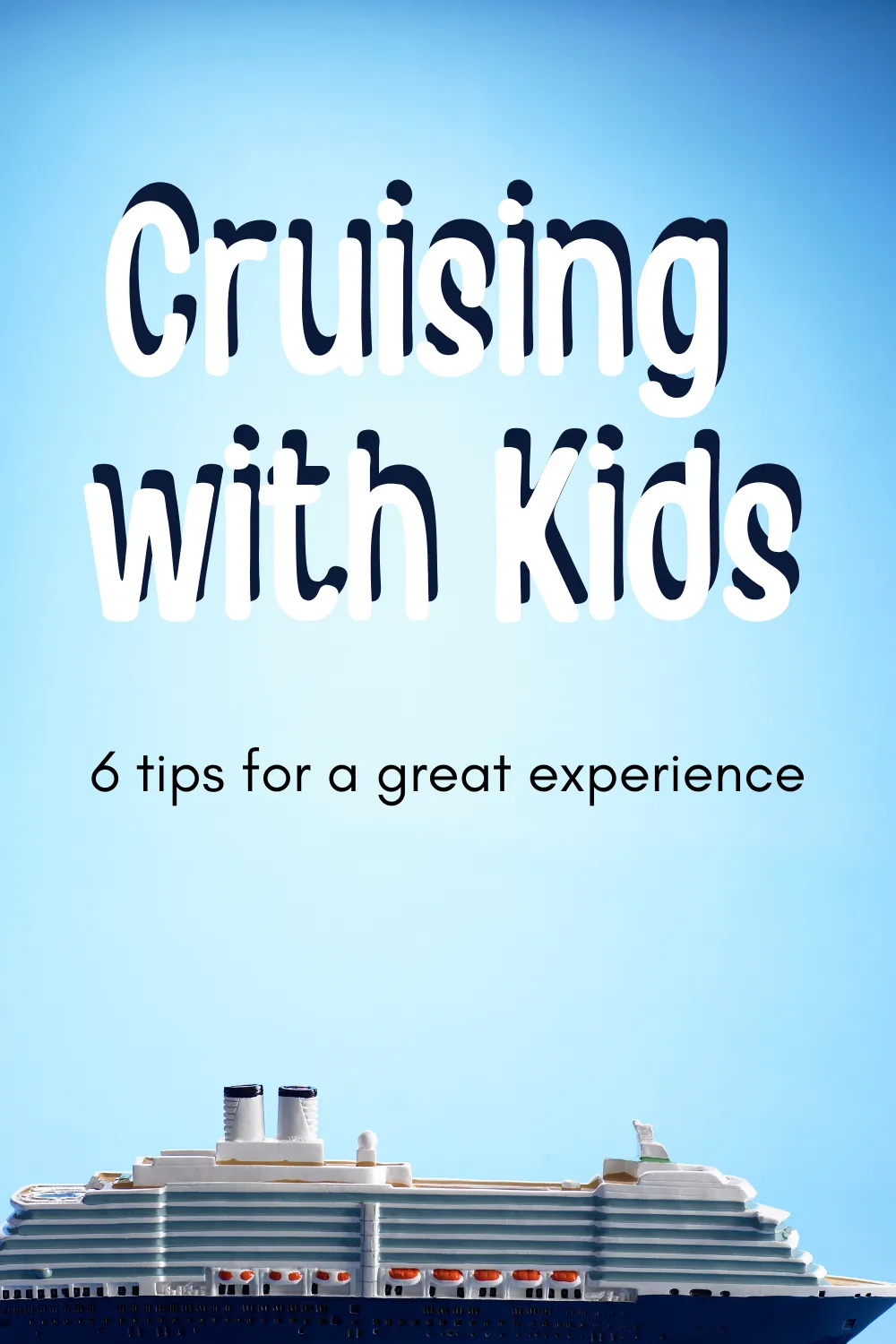
To address common concerns about family cruise packing, here are answers to frequently asked questions:
- What should I pack in my carry-on bag?
Include diapers, snacks, medications, entertainment items (like books or tablets), and a change of clothes for each child. - Do cruise ships provide baby gear?
Many cruise ships offer cribs, high chairs, and baby baths, but they are in limited supply. Reserve these ahead of time if you’ll need them. - How many outfits should I pack per child?
Plan for one outfit per day, plus a few extra for accidents or spills. Include separate options for formal nights and themed events. - Can I bring baby food?
Yes, non-perishable baby food is usually allowed. Confirm with your cruise line to avoid any surprises at check-in. - What are the best shoes to pack?
Bring water shoes for beach and pool days, sneakers for active excursions, and comfortable sandals for casual wear onboard.
Conclusion
Packing for a cruise with kids may seem daunting, but with proper planning and organization, it becomes a manageable and even rewarding part of the travel process. Focus on essentials like kid-friendly toiletries, age-appropriate entertainment, and versatile clothing suited to your destination. Leverage tools like packing cubes and over-the-door organizers to maximize space in your cabin, and always double-check that you have necessary documents and medications.
By avoiding common mistakes and tailoring your packing list to the unique aspects of cruising, you set the stage for a smooth, enjoyable, and unforgettable family vacation. Bon voyage!






